

Srimanmaharaja Samskrita Graduation and Post Graduation Center is an educational organization in Mysore, Karnataka, India.


Srimanmaharaja Samskrita Graduation and Post Graduation Center is an educational organization in Mysore, Karnataka, India.
Sanskrit College, Mysore was established by Krishnaraja Wodeyar III, maharaja of Mysore. After his death, the next king Chamaraja Wodeyar formally opened a Sanskrit School in 1876. [1]
The colleges offers courses in Veda, Agama and Shastra in traditional methods. The campus contains one of the oldest collection of Sanskrit manuscripts. [2] The courses in the college vary from two years to 13 years. The minimum age for enrolment is eight years.
Notable alumni include Mysore M. Vasudevacharya, Dr. S.Radhakrishnan, Prof. S.Hiriyanna, Maharaja Jayachamaraja Wodeyar and Naveenam Venkatesha Sastry. [3]
Students are admitted and instructed without charging any fee. Hostel facility is also free.

Mysore, officially Mysuru, is the second-most populous city in the southern Indian state of Karnataka. It is the headquarters of Mysore district and Mysore division. As the traditional seat of the Wadiyar dynasty, the city functioned as the capital of the Kingdom of Mysore for almost six centuries. Known for its heritage structures, palaces, and its culture, Mysore has been called the "City of Palaces", the "Heritage City", and the "Cultural Capital of Karnataka". It is one of the cleanest cities in India according to the Swachh Survekshan.
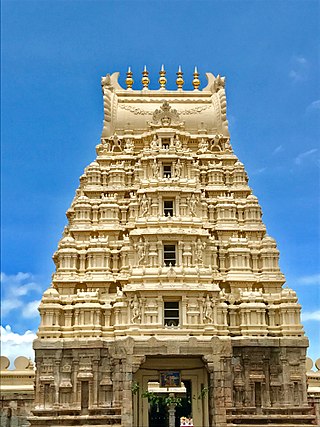
Srirangapatna is a town and headquarters of one of the seven Taluks of Mandya district, in the Indian State of Karnataka. It gets its name from the Ranganthaswamy temple consecrated around 984 CE. Later, under the British rule, the city was renamed to Seringapatam. Located near the city of Mandya, it is of religious, cultural and historic importance.

The Wadiyar dynasty,(Kannada:[ oɖejɐru]) also referred to as the Wadiyars of Mysore, is a late-medieval Indian royal family of former maharajas of Mysore from the Urs clan originally based in Mysore city.
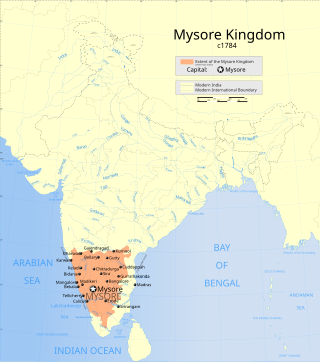
The Kingdom of Mysore was a geopolitical realm in southern India founded in around 1399 in the vicinity of the modern-day city of Mysore and prevailed until 1950. The territorial boundaries and the form of government transmuted substantially throughout the kingdom's lifetime. While originally a feudal vassal under the Vijayanagara Empire, it became a princely state in British India from 1799 to 1947, marked in-between by major political changes.

The Chamundi Hills are located 13 km east of Mysore, Karnataka, India. The name comes from the Chamundeshwari Temple at the peak. The average elevation is 1,060 metres (3,480 ft).

Chamarajendra Wadiyar X was the twenty-third Maharaja of Mysore between 1868 and 1894.

Mysore Palace, also known as Amba Vilas Palace, is a historical palace and a royal residence. It is located in Mysore, Karnataka, India. It used to be the official residence of the Wadiyar dynasty and the seat of the Kingdom of Mysore. The palace is in the centre of Mysore, and faces the Chamundi Hills eastward. Mysore is commonly described as the 'City of the Palaces', and there are seven palaces including this one. However, the Mysore Palace refers specifically to the one within the new fort.

The maharaja of Mysore was the king and principal ruler of the Kingdom of Mysore and briefly of Mysore State in the Indian Dominion roughly between the mid- to late-1300s and 1950. The maharaja's consort was called the maharani of Mysore.

Melukote in Pandavapura taluk of Mandya district, Karnataka, in southern India, is one of the sacred places in Karnataka.It is built on rocky hills, known as Yadugiri, Yaadavagiri or Yadushaila, overlooking the Cauvery valley. Melukote is about 51 km from Mysore and 133 km (83 mi) from Bangalore.

Jayalakshmi Vilas Mansion is a heritage building in Mysore.

The Sritattvanidhi is a treatise written in the 19th century in Karnataka on the iconography and iconometry of divine figures in South India. One of its sections includes instructions for, and illustrations of, 122 hatha yoga postures.
Chamarajendra Academy of Visual Arts (CAVA) is a visual art school in Mysore, in the state of Karnataka in India. The academy is affiliated to the University of Mysore and offers courses in drawing, painting, sculpture, graphics, applied arts, photography and photo-journalism and art history. CAVA awards degrees in Bachelor of Fine Arts (BFA) and Master of Fine Arts (MFA).
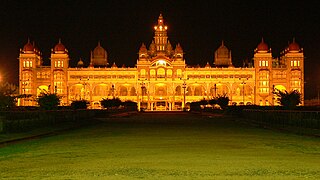
Mysore is a city in the state of Karnataka, India. It is known as the cultural capital of Karnataka. Mysore was the capital of the Wodeyar kings who ruled over the Mysore Kingdom for many centuries. Wodeyars were great patrons of art and music and have contributed significantly to make Mysore a cultural centre. Mysore is well known for its palaces, museums and art galleries and the festivities that take place here during the period of Dasara attract a worldwide audience. Mysore has also lent its name to popular dishes like Mysore Masala Dosa and Mysore Pak. Mysore is also the origin of the popular silk sari known as Mysore silk sari and has also given rise to a popular form of painting known as Mysore painting.

The Kingdom of Mysore (1399–1950) was founded by Yaduraya in 1399 as a feudatory of the Vijayanagara Empire and became an independent kingdom in the early 17th century, after the decline of the Vijayanagara Empire. Many musicians and composers have presumably adorned the courts of the Mysore kings from Yaduraya's time, furthering the Dakshinadi school of music that had developed in earlier centuries. However, records are only available from the time of King Ranadheera Kanteerava Narasaraja Wodeyar (1638). Musical treatises surviving from this time, though, provide ample information on the music, musical instruments, the types of compositions, the raga (melodies) and the tala (rhythms) used. Though all the Mysore kings patronised music, the golden age of Carnatic music was considered to be during the reigns of Kings Krishnaraja Wodeyar III (1794–1868), Chamaraja Wodeyar IX (1862–1894), Krishnaraja Wodeyar IV (1884–1940) and Jaya Chamaraja Wodeyar (1919–1974). The reign of Krishnaraja Wodeyar IV is regarded as particularly important in musical terms.
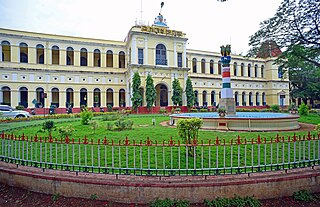
Maharaja's College, Mysore (1889) constituent college to Mysore University.
Rudrapatna Shamasastry (1868–1944) was a Sanskrit scholar and librarian at the Oriental Research Institute Mysore. He re-discovered and published the Arthashastra, an ancient Indian treatise on statecraft, economic policy, and military strategy.
Mahamahopadya Dr. Vidvan N. Ranganatha Sharma (1916–2014) was a Sanskrit and Kannada scholar, particularly known for his erudition in grammar (vyākaraṇa) of both Sanskrit and Kannada.
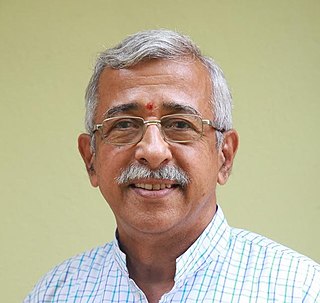
Chamu Krishna Shastry is an Indian Educationist who has been working for the revival of the Sanskrit language. He is the trustee and Secretary of Samskrit Promotion Foundation. He is also the co-founder of Samskrita Bharati. Now he is spearheading a movement to teach Sanskrit Through Sanskrit On 25 January 2017, Government of India announced "Padma Shri" award in the category Literature and education for his contribution towards the promotion of Sanskrit.
Poornaprajna Vidyapeetha is a gurukula in Bangalore, that was founded by Sri Vishwesha Teertha Swamiji of Pejawara Matha, Udupi in 1956. It is dedicated to the preservation and propagation of Indian philosophical texts.

Krishnacharya Tamanacharya Pandurangi, also known by the pen name Viswamangala, was an Indian Sanskrit scholar and a notable Indologist. Pandurangi was unique among contemporary Sanskrit scholars, being simultaneously at home among both traditional and modern systems of education. In 1989, the Government of India honoured him with the Rashtrapati Award for his contributions to literature and research.